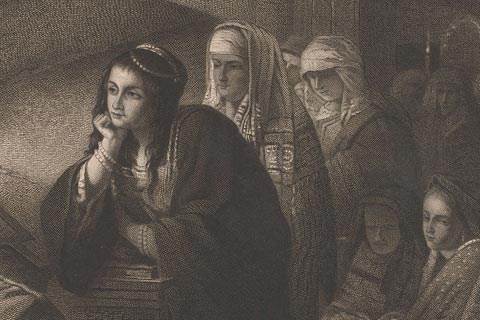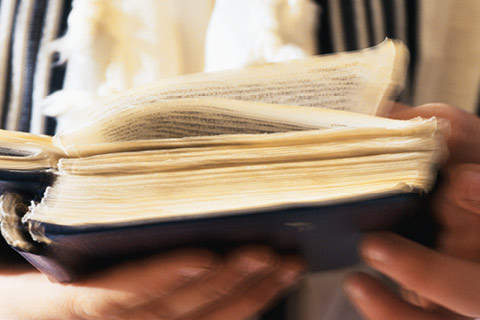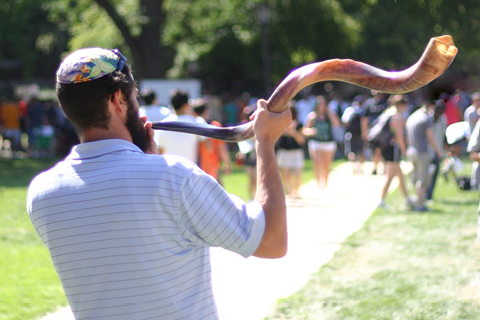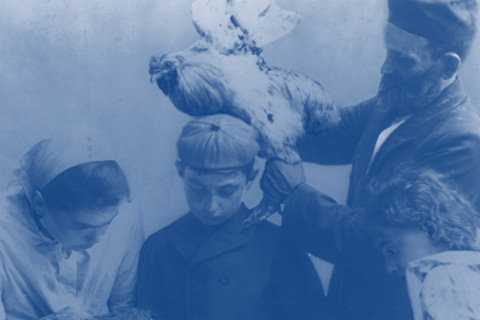High Holiday Treasures from the Library’s Judaica Collection
Sept. 3, 2021
Among the treasures in the library's Robert D. Farber University Archives & Special Collections are Jewish manuscripts and artifacts dating as far back as ancient Rome.
The Judaica pictured here all pertain to the High Holidays. Each is a snapshot of a moment in the history of Judaism, showing the influences and crosscurrents then shaping the Jewish community.
They also demonstrate how Jews wittingly and unwittingly absorbed gentile imagery into their customs while still maintaining core elements of the religion. In this sense, the items are both of their time and timeless.
Photos by Mike Lovett.
Amsterdam Prayer Book, 1705
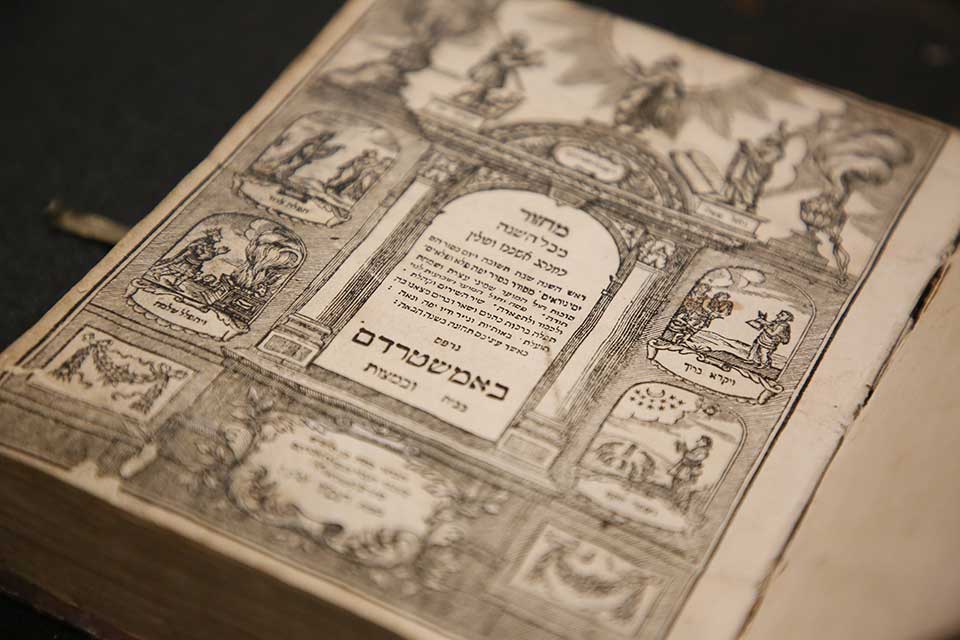
Amsterdam was a major printing center in Europe through much of the 18th century, and this prayer book was likely meant to be marketed in Germany and Poland.
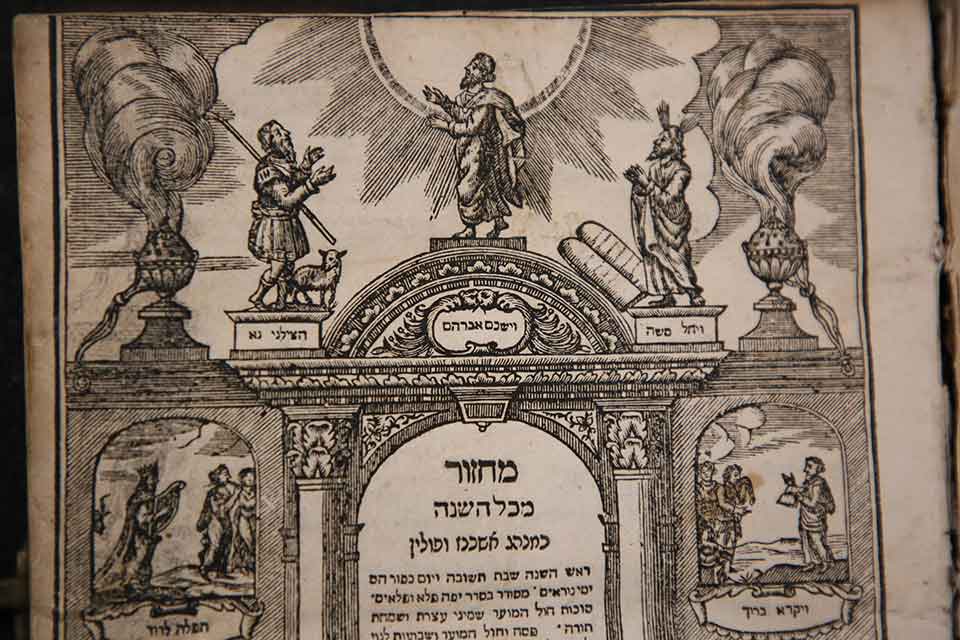
In the center stands Abraham with Isaac on the left, beseeching him not to go through with the sacrifice of his son. On the right is Moses. Yes, that's a horn coming out of his head. In Exodus, the Jewish leader is described as "beaming" with the divine spirit, but Renaissance painters misinterpreted the word to mean horn. In time, even Jewish books incorporated this image.
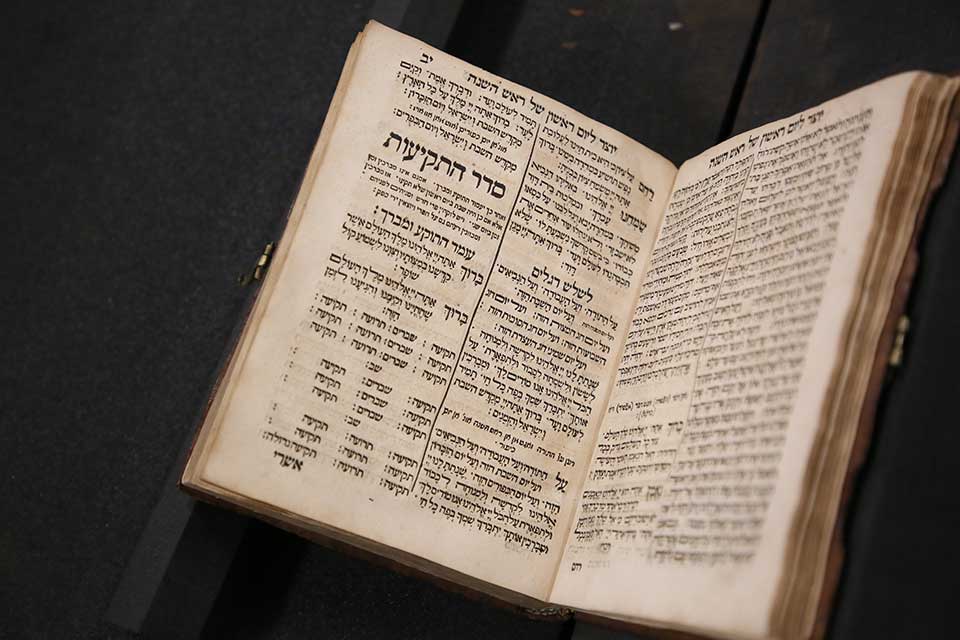
Order of the shofar blasts: The blasts, "teki'ah, shervarim, teru'ah," appear in the far left column.
Venetian Prayer Book, 1711-1715
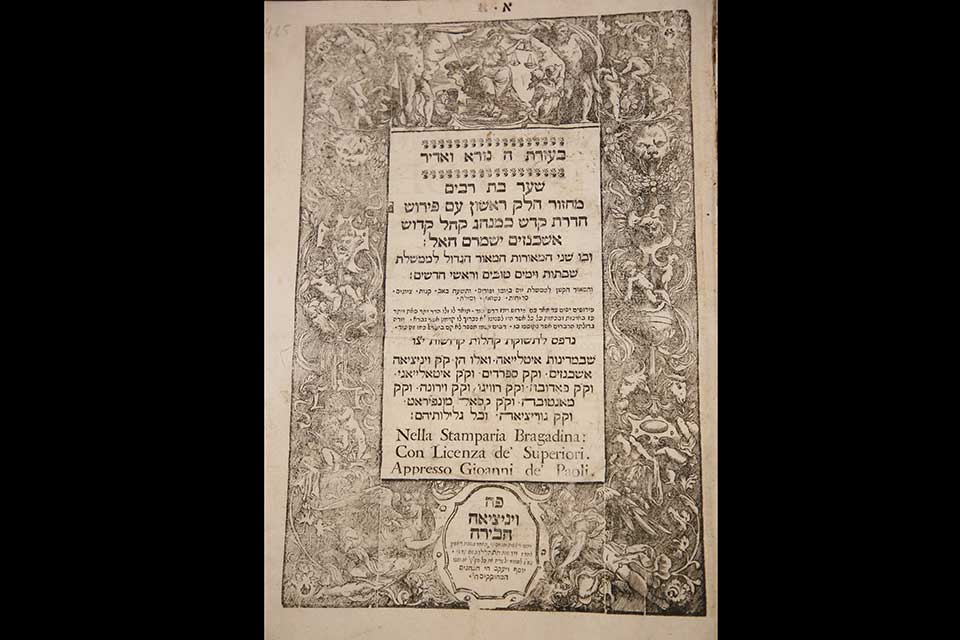
Designed for wealthy patrons, this book, part of a two volume set, contains the liturgy for the entire year for Ashkenazi, Sephardi and Romani (Italian) Jews with some kabbalist commentary thrown in for good measure.
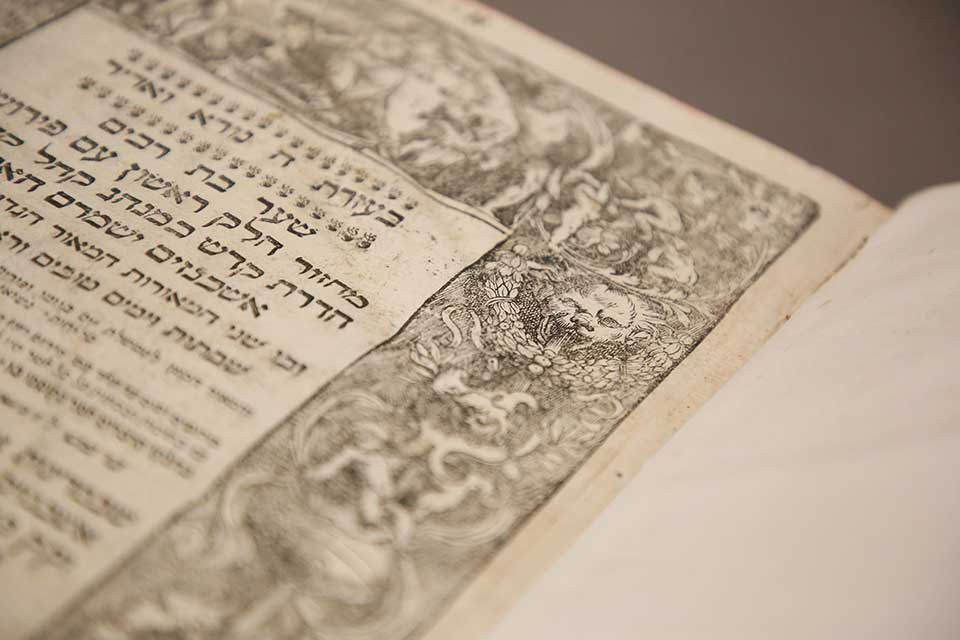
The decorations — scales of justice on the top, lions heads on the sides — aren't particularly Jewish. It's likely that a wood frame used to print a secular or Christian book was reused here, a cost-cutting measure.
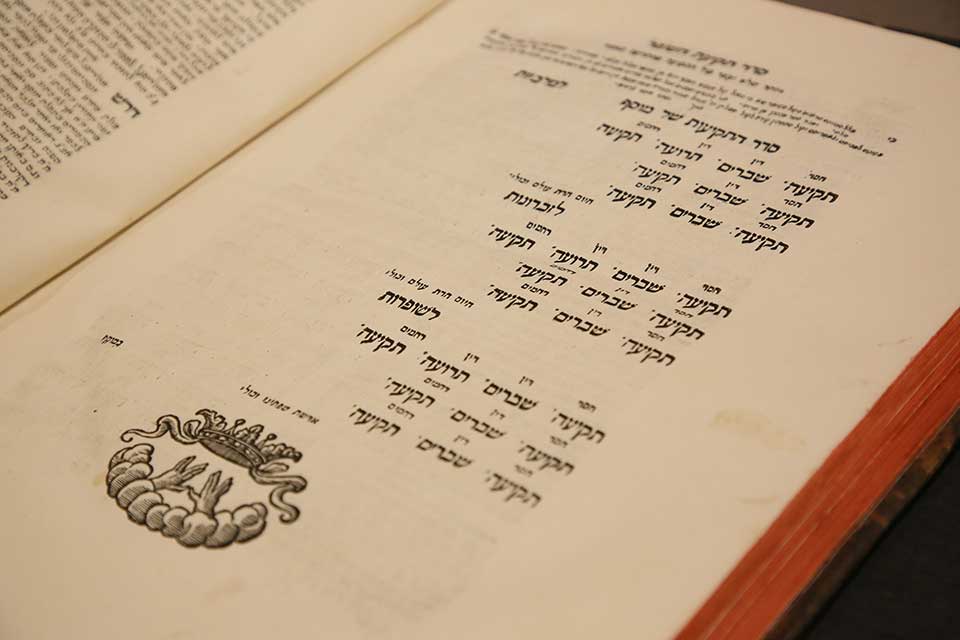
The prayer features the Hebrew for the three sounds made by the shofar — teki’ah, shevarim and teru’ah.
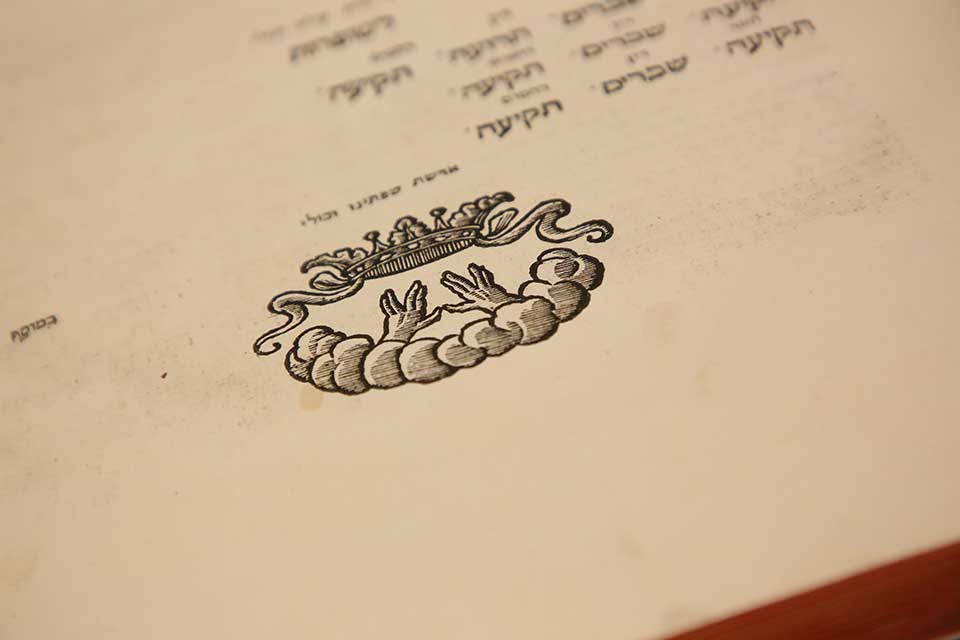
The crown at the bottom symbolizes the kohanim, descendants of the priests who served in the ancient Temple. When a kohen blessed the congregation, he made this hand gesture. Much, much later Leonard Nimoy, a Jew, decided to use it for the Vulcan salute in Star Trek.
American Yom Kippur Prayer Book, 1866
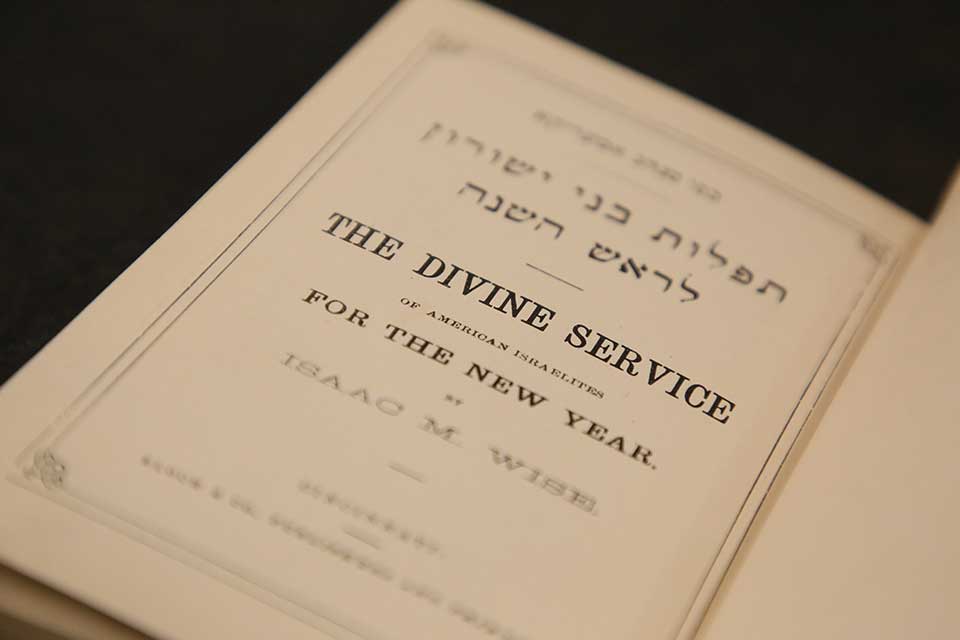
Isaac Mayer Wise was a pioneer in the development of American Reform Judaism. He headed a temple in Cincinnati and throughout his career advocated for standardizing prayer books as a way of uniting Reform Jewry.
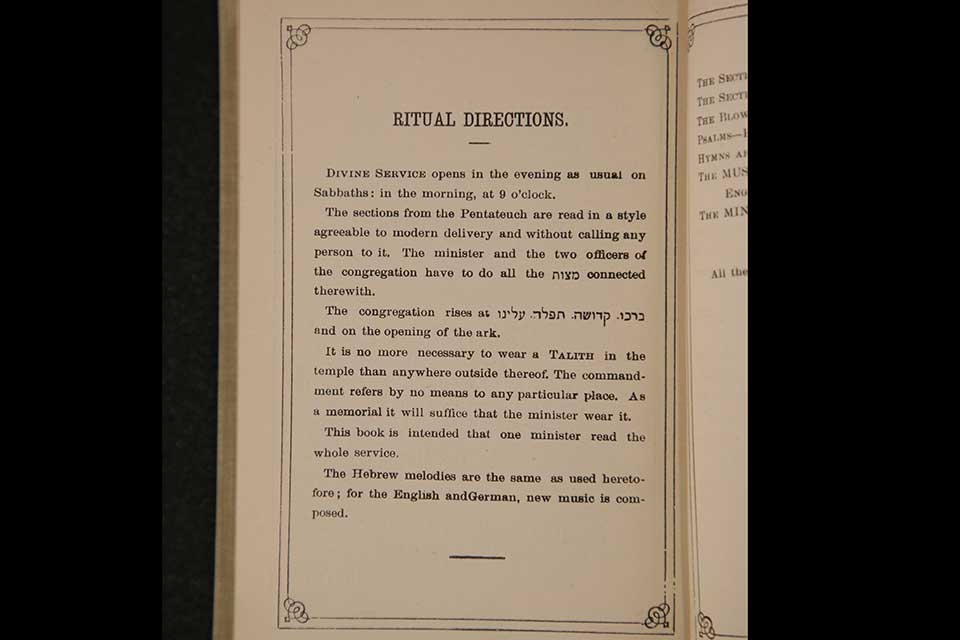
Here, Wise details some of the changes he made to the standard Yom Kippur service. He dispenses with wearing the tallit, the Jewish prayer shawl. Though traditional melodies for the Hebrew remain, new music has been written to accompany the added English and German (Many Reform Jews at the time were German speakers.)
Bernice and Henry Tumen Collection
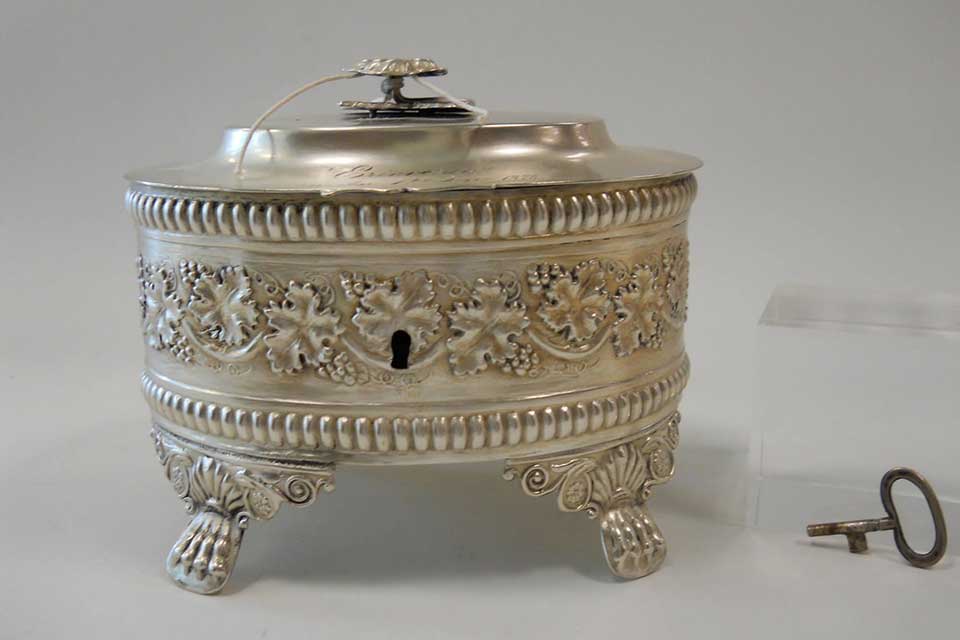
German etrog container, 1878: It was too cold in Central and Northern Europe to grow etrog — the citron fruit used during the holiday of Sukkot. They were typically imported at great expense from warmer climes such as Greece and Israel. For protection — and to highlight their beauty and status — they were kept in elaborate containers, such as this silver-plated case.
A single congregation might only have a few etrogs to share among its members. And in this case, when it wasn’t in use, it was kept under lock and key.
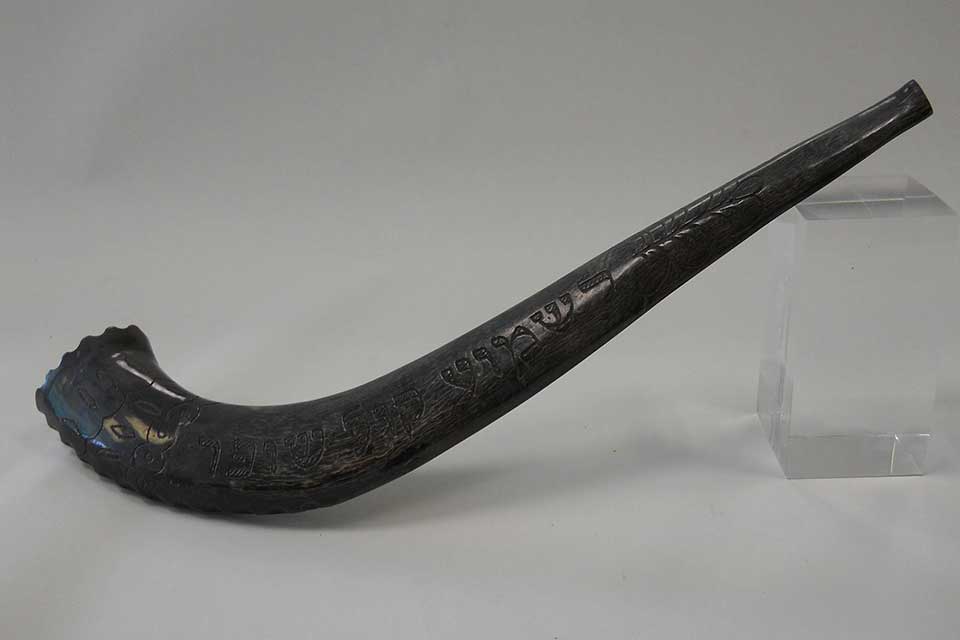
Shofar, late 19th-century Europe: This ram's horn is unusual for having an inscription written on it, a verse from the blessing for blowing the shofar that reads, "To hear the sound of the shofar."











